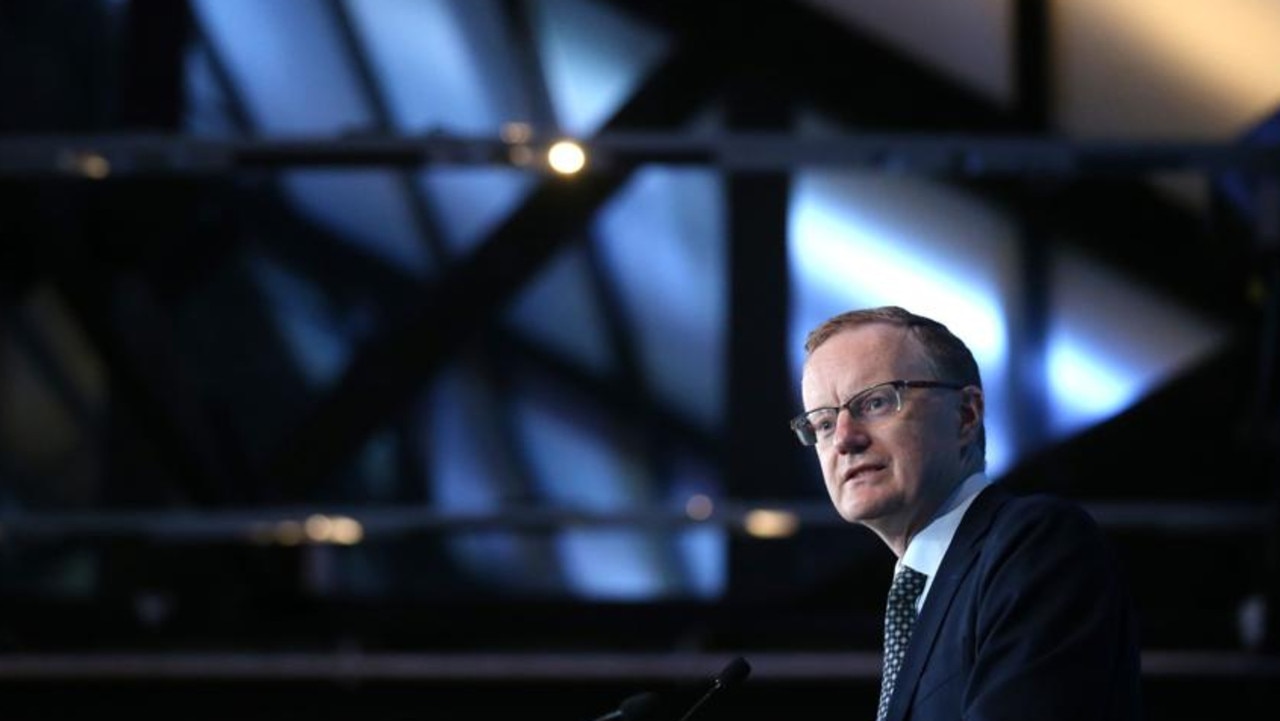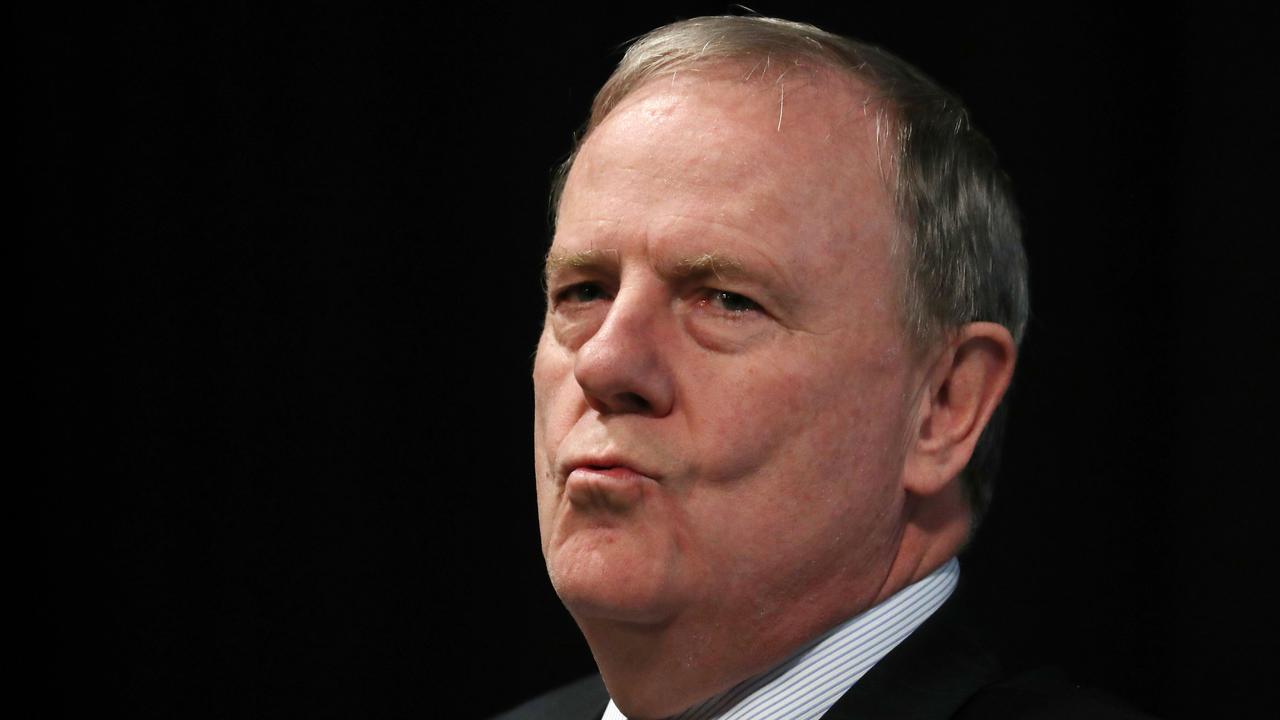Reserve Bank risks being ‘its own worst enemy’ by cutting rates and spooking consumers
The Australian dollar plummeted after the RBA’s rate cut announcement. But one sentence sent chills through the economy.
The Australian dollar fell sharply after yesterday’s rate cut, dropping to a decade low of US66.72c in overnight trade.
The tone of the monetary policy accompanying the RBA’s rate cut did the damage, the National Australia Bank’s head of FX strategy Ray Attrill said, the Sydney Morning Herald reported.
“The last paragraph … said the board will conduct policy to achieve ‘full employment and the inflation target’, in contrast to ‘make progress in reducing unemployment and achieve more assured progress towards the inflation target’ as appeared in the September statement,” Mr Attrill told clients.
That means the bank has set itself a tougher target to lower unemployment and raise inflation — rather than just work towards those goals.
The Australian dollar clawed back some of those losses, finishing at US67.02c. But as the graph below shows, the dollar has been dropping for years.
The dollar rises and falls relative to other currencies and is sensitive to global growth forecasts. The latest drop appears to reflects concerns about the global economy.
According to the Commonwealth Bank, when we see a period of increased volatility in the market we also tend to see the Aussie dollar fall.
Investors rush for the safe haven of the US dollar and government bonds.
It’s not all bad news though. Although the low Australian dollar makes importing goods and overseas holidays more expensive, it could help kickstart the economy by increasing exports.
It’s also closely linked to the Chinese economy — which has begun slowing following its meteoric rise over the past three decades.
SLASHED RATES
Economists warned the Reserve Bank risks being “its own worst enemy” by slashing interest rates below 1 per cent for the first time in history and further weakening consumer confidence.
RELATED: Reserve Bank cuts rate to 0.75 per cent
RBA governor Philip Lowe cut rates to just 0.75 per cent yesterday, citing rising unemployment and weak economic growth.
But Deloitte Access Economics principal Chris Richardson says the central bank needs to do a better job explaining the reasons for such drastic movements so as not to spook the population’s spending.
“The Reserve Bank is cutting interest rates for two reasons and everybody assumes it’s just the usual reason — weakness,” he told news.com.au.
“Yes, the economy’s weak but it’s not particularly weak. It’s also trying to get unemployment lower to shift wages along, and that’s an important thing to do.”
Mr Richardson said consumer confidence fell to two-year lows since the RBA began cutting rates in the middle of the year.
“It risks being its own worst enemy unless it explains better what it’s trying to do,” he said.
Many have doubted the wisdom of excessively low interest rates because the further they fall, the more difficult it is for banks to pass on the cuts to its mortgage customers.
“How it works is that when the Reserve Bank cuts, the big banks cut the rates they pay depositors so that they can cut the rates they pay borrowers and the whole thing shifts,” Mr Richardson said.
“But these days more and more depositors are on zero interest rates anyway, so part of the problem is rates are so low we may not see much extra coming from the big banks.
“That’s not the banks being evil, that’s maths.”

RISK OF FEAR SPREADING
AMP chief economist Shane Oliver said lowering rates to help kickstart the economy was “more positive than negative” but admitted there was a risk consumers may be scared into tightening their wallets.
“It makes people think it must be really bad, so there is that negative sentiment impact,” he told news.com.au.
“But the household sector as a whole does provide a net benefit; the value of household debt in Australia is more than double the value of bank deposits.
“So when you cut interest rates, the benefit to those with debt swamps the loss of income for those with bank deposits.”
RELATED: Costello’s warning for Australia’s ‘abnormal’ economy, interest rates
RELATED: Housing market: How to take years off your mortgage
RELATED: Homes in Sydney’s premium suburbs are surging in value
Dr Oliver says low rates mean Australians may free up their finances down the track by paying off their debt faster but it doesn’t guarantee people will spend in the short-term.
“There is an argument that if you want a more assured impact on the economy, then fiscal stimulus is the way to go,” he said.
“And that pressure is growing.”
Prime Minister Scott Morrison has wavered in his position on rejecting calls to increase infrastructure spending but said last week his government would assess the possibility of stimulus in the December mid-year budget review.

Australia’s longest serving treasurer Peter Costello said last week the looming interest rate cut would have little effect on the economy.
He said the soft levers of monetary policy in the hands of Dr Lowe had “passed their useful life” and the government should resist calls to fall into debt to stimulate the economy.
“I hear the case for infrastructure — most of it is built by state government and in fact they are spending big on big projects,’’ Mr Costello said.
“The commonwealth government doesn’t really build infrastructure and when the commonwealth government builds infrastructure it builds school halls and puts pink batts into homes. It rarely works … it just can’t do it. I would be very, very wary about going back down the path of fiscal stimulus.”
Current Treasurer Josh Frydenberg backed Mr Costello’s scepticism of the economic benefits in further interest rate cuts.
“Peter Costello is absolutely right that it’s a law of diminishing returns once you start to reduce interest rates below a certain amount, the impact on the economy is reduced,” Mr Frydenberg told ABC radio on Friday.
Mr Frydenberg also agreed with his mentor’s view to resist the urge to ramp up federal infrastructure spending.
“They build a lot of it and they also help fund it, and obviously that is where great care needs to be taken to choose the right projects, but also too to help fund them,” the Treasurer said.
Following the third rate cut since June and predictions by economists it will tumble to 0.25 per cent by early 2020, shadow treasurer Jim Chalmers ramped up his pressure on the Coalition’s fiscal plan.
“Australians are struggling, the economy is growing at its slowest pace in a decade, wages are stagnant, and the RBA is getting no help from the Morrison Government,” he said in a statement on Tuesday.
“Today’s decision to cut the cash rate to 0.75 per cent highlights the urgent need for the Liberals to bring forward a plan to responsibly stimulate the floundering economy.”
Continue the conversation on Twitter @James_P_Hall or james.hall1@news.com.au




